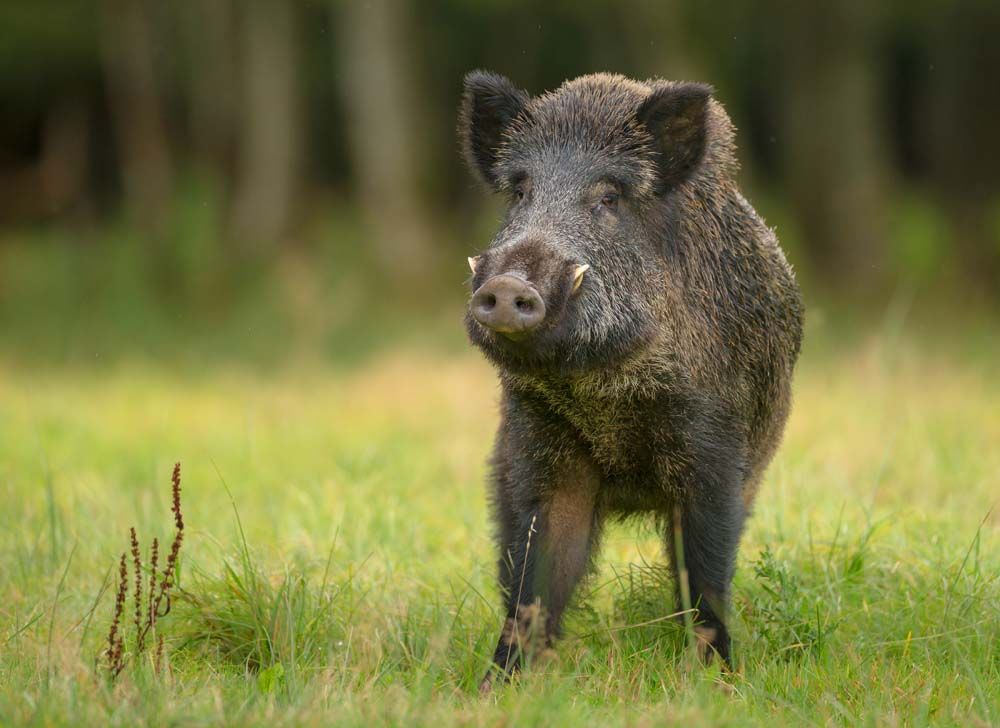Saying Okay to Okra: Facts About This Delicious Vegetable
This Southern Staple Grows in the North


One time I was traveling for business and saw fried okra on the menu at a café in eastern Virginia. Curious, I ordered it. One bite later, I decided I needed to learn more about this delicious vegetable.
What Is Okra?
Okra is a hibiscus, a flowering plant in the mallow family. Native to Africa, okra grows best in hot and humid climates and is an important garden food source grown in the southeastern U.S.
Leading commercial growing areas include Mexico, Saudi Arabia, Egypt, Ghana, Pakistan, and India.
Botanically speaking, okra is a fruit.
That aside, it’s treated as a vegetable and eaten in a wide variety of dishes, from frying to baking to pickling. I’ve found okra is a taste that people either love or hate.
Varieties of Okra
There are a tremendous number of okra varieties. In my North Dakota garden, I have settled on a few that reliably produce each summer. The most popular variety is an All-American Selection from 1939, the Clemson Spineless, estimated to represent 95% of the country’s commercial okra production. Plants grow from 3’ to 5’ feet tall and occasionally taller.
I will often grow a small row of the Clemson, but have found a few other varieties work best for me.
The first is the Gurney’s Gumbo Hybrid. The pods stay tender longer, allowing for a tardy picker to still gather edible pods. It germinates better and grows to an astounding 6’ to nearly 8’.
I also grow Cow Horn okra, an heirloom variety that produces twisty, lengthy pods that remain tender up to 10” long. The flavor is wonderful, and the plants are productive.
In my garden, Red Burgundy Okra has not done very well. The short-stature plant is beautiful but produces less than other varieties. The deep red pods are gorgeous, but the color fades when cooked. Red Burgundy okra would be a great option for container growing.
As soil temperatures, microclimates and nutrients are different in every garden, experimentation is critical in finding what okra grows best for you.
Growing Okra
Though okra is best known in the southeastern part of the country, it can be grown anywhere with hot summers.
When it does get very hot and coupled with long days of sunlight, okra can thrive in a northern garden.
Gardeners often recommend that okra seedlings be used in the shorter growing season of the north, but I have had very poor luck in transplanting them. They are extremely fragile and the vast majority that are transplanted keel over and die.
Instead, I direct sow once the days begin warming up, waiting until the long, warm days of early June to plant okra seed. To further warm the ground, I use black woven landscape fabric and cut with a sharp knife down the center to create exposed soil of about 3 inches across.
That is followed by gently pressing the seed into the soil a quarter inch or so deep. Each seed is roughly 8 to 10 inches apart in row. I follow the planting immediately with a good soaking.
Okra seeds are very hard and can be scarified by soaking overnight in warm water. Even then, I’ve found germination takes time and is not always successful. Once the plants start to emerge, which may take up to three weeks, I will re-seed any that didn’t grow.
The seedlings start out slow, but once the heat of July hits, they really explode, growing inches by day as the hot sun beats down. Whereas cucumber leaves will curl in the hot sun, the broad leaf of the okra pleads for more.
Maturation and Harvesting
By August in North Dakota, the okra plants start producing lovely yellow flowers. The pale colored flowers are perfect, having both male and female parts. Despite that, bees will often pollinate the plants as well. The buzzing of the bees offers a nice respite from weeding in the sun.
As beautiful as the flowers are, they don’t last long. Once the petals fall, the okra pods start to develop. To harvest tender, tasty pods, I walk through my okra rows each evening. The relative coolness of the evening is soothing and offers relief from the heat of the day. My plastic bucket is soon filled with tender pods.
Cow Horn okra can be snapped from the plant, but most varieties require a quick snip with scissors. Clemson Spineless is well named, as most other okra plants have fuzzy spines much like squash fuzz on the branches. The spines aren’t sharp, just a nuisance. Some gardeners wear gloves when picking.
I like to sample occasional pods to make sure they are tender. Fresh okra has an enjoyable grassy, green taste. Once pods get too big, the texture becomes akin to a tree branch—they are impossible to eat, and even after pickling remain inedible.
I harvest overgrown pods to further stimulate further production on the plant, and pitch them into the chicken coop. The hens don’t seem to mind.
Going into winter, I leave my okra plants standing. A myriad of insects overwinter in the dried stalks of plants and I don’t want to affect the ecosystem I create each summer. Since they are so tall, the dead stalks double as a nice snow catch. as well.
Enjoying Okra on the Table
To most people, okra stirs visions of slimy, mucilaginous gunk—not unlike the skin of a northern pike pulled from the water—and okra has slime along those lines.
When cooked, the mucilage is produced. In stews and soups like gumbo this adds body and thickening to the dish. In other meals, however, it can be off-putting for people that have textural issues.
My favorite way to eat okra is by pickling. I love the crunch of the pod and they way they carry the pickle flavor throughout the pod. However, the slime factor is real. If you have issues with the slime, pickled okra is not a dish to prepare. (My partner Heather cannot even get pickled okra past her lips).
An advantage to pickling is that it can be done from frozen. Okra has a very short shelf life, and within a few days, it becomes soft, but by tossing them into a zippered storage bag, the pods freeze well and can be utilized later.
I simply rinse frozen okra in a colander until it begins to soften and then pickle it in a steam canner.
Frozen okra can also be fried, baked or put in soup. Of course, the texture is a bit softer than fresh, but our winters are long and it’s nice to enjoy baked okra on a cold January evening.
To bake, I slice each pod crosswise and place on a cookie sheet, sprayed with oil. I shake some salt, pepper and cumin over the pods and bake in a 450-degree oven for around 15 minutes, or until the they are crispy. Okra pairs very well with chicken, pork and fish.
Okra can also be fried. Dice the pods into quarter-sized pieces, bread and fry. Homemade fried okra sure beats what most chain restaurants make!
Okra in the Northland
Okra is a great, surprising option for Northern gardeners, offering an easy-to-grow plant with delicious and nutritious pods. Each time I pass a small jar of pickled okra in the grocery store, marked at $6 or more, I chuckle. I’ve got quarts and quarts of it for nothing more than a pack of seeds!
About the Author
Jeffrey Miller lives at Cottonwood Bend Farm, on the banks of the Sheyenne River in eastern North Dakota. The Director of the Cass County Soil Conservation District by day, he works on the homestead in his free time by writing, growing food, and trying to keep the chickens happy.
Tags:Country Journal

Acreage Life is part of the Catalyst Communications Network publication family.















